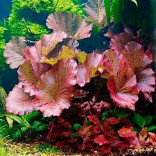Sub-Acute Toxicological Evaluation of Methanol Leaf Extract of Nymphaea lotus Linn (Nymphaeceae) in Wistar Rats http://www.doi.org/10.26538/tjnpr/v7i3.28
Main Article Content
Abstract
Nymphaea lotus has been used for centuries as an astringent, aphrodisiac, sedative, analgesic, anti-inflammatory, and for the treatment of infectious diseases. This study is aimed at evaluating the subacute toxicity profile of methanol leaf extract of Nymphaea lotus in Wistar rats. Rats were
administered the crude methanol leaf extract orally for 28 days at 250, 500, and 1,000 mg/kg. Weekly body weight, food, and water intake were recorded. On the 29th day, the rats were sacrificed, and their hematological and biochemical parameters were assessed, as well as histological examination of the kidney, liver, stomach, and intestine. The extract had no effect on the body weights, relative organ weights, or food and water intakes of the animals. It had no impact on hematological markers at the tested doses (hemoglobin, packed cell volume, red blood cell, white blood cell, mean corpuscular hemoglobin, mean corpuscular volume, and platelets concentration), except for alkaline phosphate, which was significantly (p≤0.01) greater at the 500 mg/kg. There was no significant effect on liver function parameters evaluated (total bilirubin, direct bilirubin, alanine aminotransferase, aminotransferase, and aspartate). Urea, creatinine and chloride levels were significantly elevated (p≤0.01 and p≤0.05) at 250 and 500 mg/kg doses, but not at the 1,000 mg/kg dose. Histopathological evaluation of the liver, kidneys, stomach, and intestine revealed no notable histological abnormalities. Based on the results, the methanol leaf extract of Nymphaea lotus appears to be generally safe when taken orally at these doses.
Downloads
Article Details

This work is licensed under a Creative Commons Attribution-NonCommercial-NoDerivatives 4.0 International License.
References
Akinjogunla O, Adegoke A, Udokang I, Adebayo-Tayo B. Antimicrobial potential of Nymphaea lotus (Nymphaeaceae)
against wound pathogens. J. med. plant Res. 2009; 3(3):138- 141.
Obot A, Ayeni JSO. A Hand book of common aquatic plant of the kaiji lake basin. National Institute for Freshwater
Fisheries Research. Saolog printing production: New Bussa 1987; 17p.
Burkill HM.. The useful plants of West Africa. Royal Botanic Gardens: Kew Survey. 1997; 4:969
Rege MG, Ayanwuyi LO, Zezi AU, Odoma S. Antinociceptive, anti-inflammatory and possible mechanism of anti-nociceptive action of methanol leaf extract of Nymphaea lotus Linn (Nymphaeceae). J. Tradit. Complement. Med.
; 11:123-129.
Fajemiroye JO, Adam K, Jordan ZK, Alves CE, Aderoju AA. Evaluation of Anxiolytic and Antidepressant-like Activity of
Aqueous Leaf Extract of Nymphaea Lotus Linn in Mice. Iran. J. Pharm. Res. 2018; 17(2):613-626.
Oyeleke TO. Studies on the analgesic, anti-inflammatory and toxicological properties of the methanol stem extract of
Nymphaea lotus Linn (Nymphaeaceae) in rats and mice. Master dissertation. Ahmadu Bello University: Zaria, Nigeria. June 2015.
Kameni PM, Dzeufiet DPD, Bilanda DC, Mballa MF, Mengue NYS, Tchoupou TH, Ouafo AC, Ngoungoure MC,
Dimo T, Kamtchouing P. Nymphaea lotus Linn. (Nymphaeaceae) Alleviates Sexual Disability in L-NAME Hypertensive Male Rats. Evid. Based Complement. Alternat. Med. 2019; 1-9 https://doi.org/10.1155/2019/8619283.
Bello HF, Maiha BB, Anuka JA. The effect of Methanol Rhizone extract of Nymphaea lotus linn (Nymphaeaceae) in
animal models of Diarrhoea. J. Ethnopharmacol. 2015; 190:13-21.
Afolayan AT, Sharaibi OJ, Kazeem MI. Phytochemical Analysis and in vitro Antioxidant Activity of Nymphaea lotus L. Int. J. Pharmacol. 2013; 9(5):297-304.
Awodele O, Oreagba IA, Odoma S, Da Silva JAT, Osunkalu VO. Toxicological evaluation of the aqueous leaf extract of
Moringa oleifera Lam. (Moringaceae). J. Ethnopharmacol. 2012; 139(2):330-336.
Alastair JJ, Wood MD. Herbal remedies. NEJM. 2002 347(25):2046–2056.
Sharaibi OJ, Ogundipe OT, Magbagbeola OA, Kazeem ME, Afolayan ME. Acute and sub-acute toxicity profile of
aqueous leaf extract of Nymphaea lotus linn (Nymphaeaceae) in wister rats: Trop. J. Pharmaceut. Res. 2015; 14(7):1231-
Organization for Economic Corporation and Development. Repeated Dose 28 Day Oral Toxicity Study in Rodents.
OECD guidline for testing of chemicals. 2008; 407:1-13.
Odoma S, Zezi AU, Danjuma NM, Ahmed A, Magaji MG. Elucidation of the possible mechanism of analgesic actions
of butanol leaf fraction of Olax subscorpioidea Oliv. J. Ethnopharmacol. 2017; 199:323-327.
Taqi SA, Sami SA, Sami LB, Zaki SA. A review of artifacts in histopathology. J Oral Maxillofac Pathol. 2018; 22(2):279.
doi: 10.4103/jomfp.JOMFP_125_15. PMID: 30158787; PMCID: PMC6097380.
Uddin MA, Akter F, Chowdhury IH, Asha UH, Tanny SZ, Sony TA, Neon N, Saha S, Sikder MM, Yesmine S.
Toxicological studies of Leaf extract of Stevia rebaudiana Bertoni in Sprague-Dawley Rats. Trop J Nat Prod Res. 2022;
(5):714-720.
Olorunnisola O, Bradley G, Afolayan A. Acute and subchronic toxicity studies of methanolic extract of Tulbaghiaviolacea rhizomes in Wistar rats. Afr. J. Biotechnol. 2012; 11(83):14934.
Amresh G, Singh PN, Rao CV. Toxicological screening of traditional medicine Laghupatha (Cissampelos pareira) in
experimental animals. J. Ethnopharmacol. 2008; 116(3):454- 460.
Teo S, Stirling D, Thomas S, Hoberman A, Kiorpes A, Khetani V. A 90-day oral gavage toxicity study of dmethylphenidate and d, l-methylphenidate in Sprague– Dawley rats. Toxicol. 2002; 179(3):183-196.
Adeneye A, Ajagbonna O, Adeleke T, Bello S. Preliminary toxicity and phytochemical studies of the stem bark aqueous extract of Musanga cecropioides in rats. J. Ethnopharmacol. 2006; 5(3):374-379.
Salmela, PI, Sotaniemi EA, Niemi M, Mäentausta O. Liver function tests in diabetic patients. Diabetes care. 1984;
(3):248-254.
Dobbs N, Twelves C, Gregory W, Cruickshanka C, Richards M, Rubens R. Epirubicin in patients with liver dysfunction:
development and evaluation of a novel dose modification scheme. Eur. J. cancer. 2003; 39(5):580-586.
Xu, Q, Lu Z, Zhang X. A Novel role of Alkaline phosphatase in protection from Immunological liver Injury in Mice liver. J. Ethnopharmacol. 2002; 22:8-14.
Nyblom H, Björnsson E, Simrén M, Aldenborg F, Almer S, Olsson R. The AST/ALT ratio as an indicator of cirrhosis in
patients with PBC. Liver Int. 2006; 26(7):840-845.
Nordberg GF. Habdbook on the Toxicology of Metals. (5th Ed). Elsevier: Amsterdam 2022; 1: 299-317p.
Kamel K, Mitchell H. Fluid, Electrolyte and Acid base Physiology: A problem-based approach. (5th Ed) WB Saunders: Philadelphia. 2016; 196p.
Crook MA. Clinical chemistry and metabolic medicine. (7th Ed). Hodder Arnold: London 2006; 426p.
Gheun-Ho Kim. Renal effect of prostaglandins and cyclooxygenase-2 inhibitors. EBP. 2008; 6:35-41.
Eroschencho VP. Atlas of Histology with Functional Correlations. Williams and Wilkins Lippincott: USA. 2000; 12: 363p


